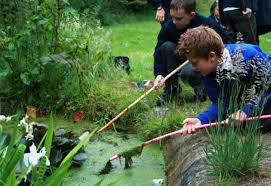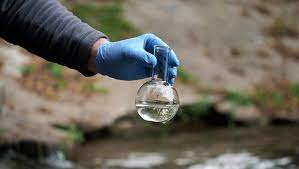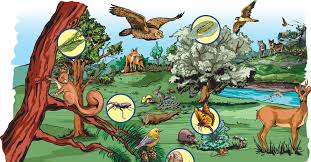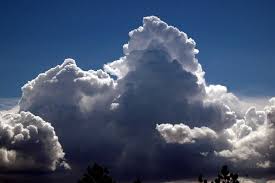Water Quality Survey
Water quality refers to the chemical, physical, biological, and radiological characteristics of water. It is a measure of the condition of water relative to the requirements of one or more biotic species and or to any human need or purpose.
It is most frequently used by reference to a set of standards against which compliance, generally achieved through treatment of the water, can be assessed. The most common standards used to assess water quality relate to health of ecosystems, safety of human contact, and drinking water.
The vast majority of surface water on the Earth is neither potable nor toxic. This remains true when seawater in the oceans (which is too salty to drink) is not counted.
Another general perception of water quality is that of a simple property that tells whether water is polluted or not. In fact, water quality is a complex subject, in part because water is a complex medium intrinsically tied to the ecology of the Earth.
Industrial and commercial activities(e.g. manufacturing, mining, construction, transport) are a major cause of water pollution as are runoff from agricultural areas, urban runoff and discharge of treated and untreated sewage.
Water Quality Survey
1. Environmental water quality
Contaminants that may be in untreated water include microorganisms such as viruses, protozoa and bacteria; inorganic contaminants such as salts and metals; organic chemical contaminants from industrial processes and petroleum use; pesticides and herbicides; and radioactive contaminants.
Read Also : Water Catchment and Levels in the Soil
Water quality depends on the local geology and ecosystem, as well as human uses such as sewage dispersion, industrial pollution, use of water bodies as a heat sink, and overuse (which may lower the level of the water).
The United States Environmental Protection Agency (EPA) limits the amounts of certain contaminants in tap water provided by US public water systems. The Act authorizes EPA to issue two types of standards:
- Primarystandardsregulate substances that potentially affect human health;
- Secondarystandards prescribe aesthetic qualities, those that affect taste, odor, or appearance.
The National Food and Drug Administration and Control (NAFDAC) regulations establish limits for contaminants in bottled water that must provide the same protection for public health.
Drinking water, including bottled water, may reasonably be expected to contain at least small amounts of some contaminants. The presence of these contaminants does not necessarily indicate that the water poses a health risk.

In urbanized areas around the world, water purification technology is used in municipal water systems to remove contaminants from the source water (surface water or groundwater) before it is distributed to homes, businesses, schools and other recipients. Water drawn directly from a stream, lake, or aquifer and that has no treatment will be of uncertain quality.
Industrial and domestic use
Dissolved minerals may affect suitability of water for a range of industrial and domestic purposes. The most familiar of these is probably the presence of ions of calcium (Ca2+) and magnesium (Mg2+) which interfere with the cleaning action of soap, and can form hard sulfate and soft carbonate deposits in water heaters or boilers.
Hard water may be softened to remove these ions. The softening process often substitutes sodium cations. Hard water may be preferable to soft water for human consumption, since health problems have been associated with excess sodium and with calcium and magnesium deficiencies.
Softening decreases nutrition and may increase cleaning effectiveness. Various industries’ wastes and effluents can also pollute the water quality in receiving bodies of water.
Environmental water quality
Environmental water quality, also called ambient water quality, relates to water bodies such as lakes, rivers, and oceans. Water quality standards for surface waters vary significantly due to different environmental conditions, ecosystems, and intended human uses.
Toxic substances and high populations of certain microorganisms can present a health hazard for non-drinking purposes such as irrigation, swimming, fishing, rafting, boating, and industrial uses.
These conditions may also affect wildlife, which use the water for drinking or as a habitat. Modern water quality laws generally specify protection of fisheries and recreational use and require, as a minimum, retention of current quality standards.
Sample Measurement
The complexity of water quality as a subject is reflected in the many types of measurements of water quality indicators. The most accurate measurements of water quality are made on-site, because water exists in equilibrium with its surroundings. Measurements commonly made on-site and in direct contact with the water source in question include temperature, pH, dissolved oxygen, conductivity, oxygen reduction potential (ORP), turbidity, and Secchi disk depth.
Sample collection
More complex measurements are often made in a laboratory requiring a water sample to be collected, preserved, transported, and analyzed at another location. The process of water sampling introduces two significant problems:
1. The first problem is the extent to which the sample may be representative of the water source of interest. Many water sources vary with time and with location.
The measurement of interest may vary seasonally or from day to night or in response to some activity of man or natural populations of aquatic plants and animals.
The measurement of interest may vary with distances from the water boundary with overlying atmosphere and underlying or confining soil.
2. The second problem occurs as the sample is removed from the water source and begins to establish chemical equilibrium with its new surroundings the sample container.
Sample containers must be made of materials with minimal reactivity with substances to be measured; and pre-cleaning of sample containers is important.
The water sample may dissolve part of the sample container and any residue on that container, or chemicals dissolved in the water sample may sorb onto the sample container and remain there when the water is poured out for analysis.
Similar physical and chemical interactions may take place with any pumps, piping, or intermediate devices used to transfer the water sample into the sample container.
Chemical analysis
The simplest methods of chemical analysis are those measuring chemical elements without respect to their form.
Elemental analysis for oxygen, as an example, would indicate a concentration of 890 g/L (grams per litre) of water sample because oxygen (O) has 89% mass of the water molecule (H2O). The method selected to measure dissolved oxygen should differentiate between diatomic oxygen and oxygen combined with other elements.
The comparative simplicity of elemental analysis has produced a large amount of sample data and water quality criteria for elements sometimes identified as heavy metals. Water analysis for heavy metals must consider soil particles suspended in the water sample.
These suspended soil particles may contain measurable amounts of metal. Although the particles are not dissolved in the water, they may be consumed by people drinking the water.
Adding acid to a water sample to prevent loss of dissolved metals onto the sample container may dissolve more metals from suspended soil particles.
Filtration of soil particles from the water sample before acid addition, however, may cause loss of dissolved metals onto the filter.[18] The complexities of differentiating similar organic molecules are even more challenging.
Real-time monitoring
Although water quality is usually sampled and analyzed at laboratories, nowadays, citizens demand real-time information about the water they are drinking.
During the last years, several companies are deploying worldwide real-time remote monitoring systems for measuring water pH, turbidity or dissolved oxygen levels.
Biosurvey
Biosurveys are used by government agencies responsible for management of public lands, environmental planning and/or environmental regulation to assess ecological resources, such as rivers, streams, lakes and wetlands.
They involve collection and analysis of animal and/or plant samples which serve as bioindicators. The studies may be conducted by professional scientists or volunteer organizations.
They are conducted according to published procedures to ensure consistency in data collection and analysis, and to compare findings to established metrics.
Read Also : Recycling and Reuse Alternatives to Waste Management
Biosurveys typically use metrics such as species composition and richness (e.g. number of species, extent of pollution-tolerant species), and ecological factors (number of individuals, proportion of predators, presence of disease).
Biosurveys may identify pollution problems that are difficult or expensive to detect using chemical testing procedures.
A biosurvey may be used to generate an index of biological integrity (IBI), a scoring system for an ecological resource.
In conclusion, making these complex measurements can be expensive. Because direct measurements of water quality can be expensive, ongoing monitoring programs are typically conducted by government agencies.
However, there are local volunteer programs and resources available for some general assessment.
Water quality analysis and monitoring is integral to ensuring that water is safe for diverse purposes it is employed.



